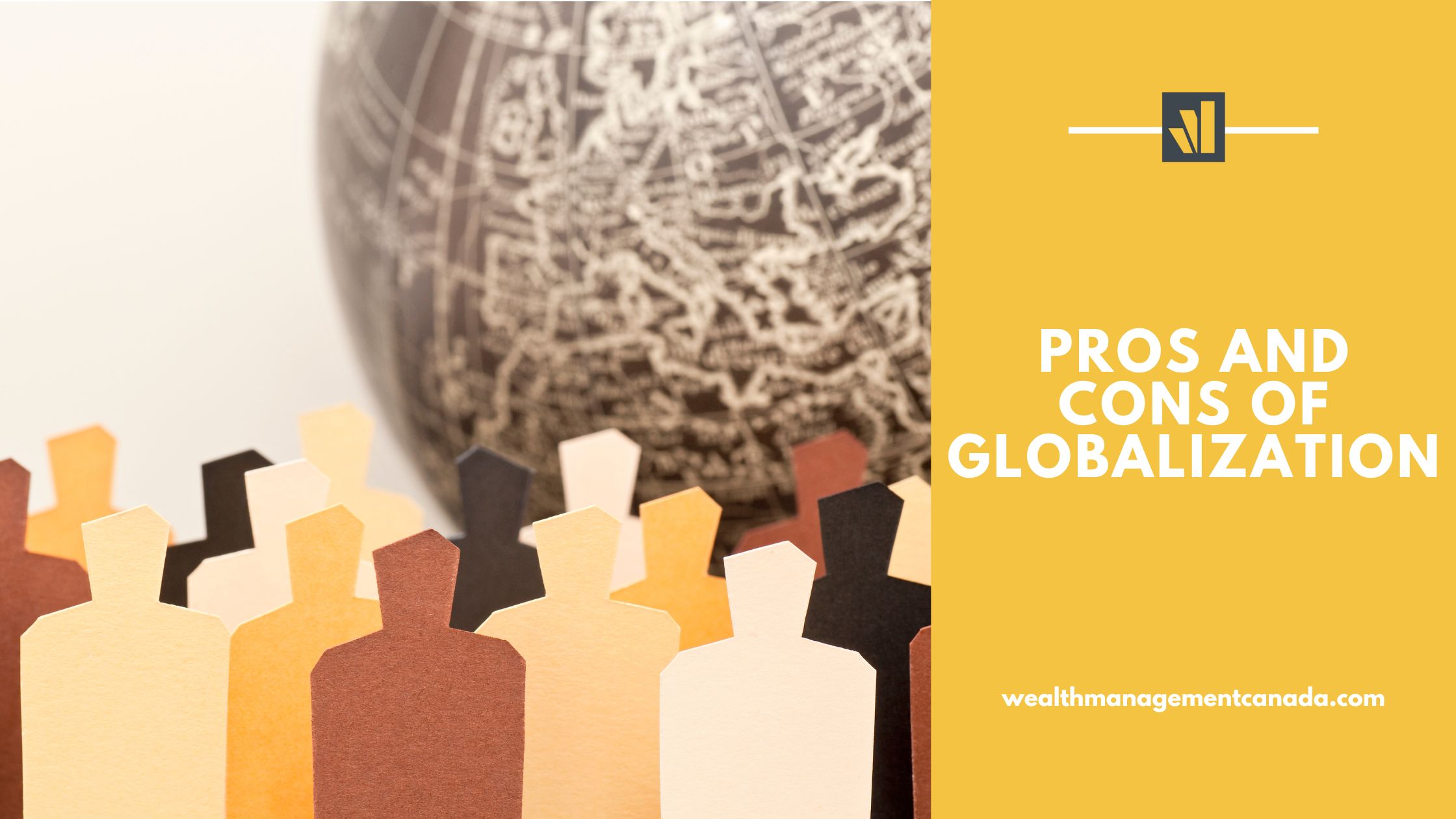A Report on Globalization and its Alignment with Sustainable Development Goals
1.0 Introduction and Historical Context
Globalization is defined as the integration of the world’s economies, politics, and cultures. The phenomenon, characterized by the stretching of economic, political, and social relationships across space and time, is considered to have commenced in the 19th century. Its acceleration is attributed to technological advancements, particularly in communication and transportation, and the global adoption of liberal trade policies. Key aspects of globalization include interconnection, intensification, time-space compression, and accelerating interdependence.
2.0 Historical Phases of Globalization
The evolution of modern globalization can be categorized into distinct eras, each marked by an acceleration in international interaction:
- First Globalization (c. 1870-1914): Driven by new transportation and communication technologies that diminished the constraints of distance.
- Second Globalization (c. 1944-1971): Facilitated by a new international monetary system that promoted trade among capitalist nations.
- Third Globalization (c. 1989-Present): Initiated by the fall of the Eastern bloc and the advent of the World Wide Web, which opened new markets to capital flows. A potential “Fourth Globalization,” characterized by a shift from goods to knowledge and services, may be emerging.
3.0 Globalization’s Impact on Sustainable Development Goals (SDGs)
3.1 Positive Contributions to the SDG Agenda
Increased global interconnectedness has yielded benefits that align with several Sustainable Development Goals:
- SDG 1 (No Poverty): The dissemination of industrial technology and subsequent productivity gains have contributed to a reduction in the percentage of the world’s population living in poverty.
- SDG 3 (Good Health and Well-being): The global sharing of medical knowledge has led to a dramatic decrease in the incidence of major diseases.
- SDG 8 (Decent Work and Economic Growth): Global trade has fostered economic growth, creating opportunities for employment and prosperity in many regions.
- SDG 16 (Peace, Justice and Strong Institutions): Economic interdependence among nations is credited with discouraging interstate conflict and promoting peaceful relations.
3.2 Challenges and Criticisms in Relation to SDGs
The implementation of globalization has faced significant criticism for its negative impacts, which conflict with the principles of sustainable development:
- SDG 8 (Decent Work and Economic Growth): The ability of multinational corporations to relocate operations to countries with cheaper labor raises concerns about labor exploitation and undermines the goal of decent work for all.
- SDG 10 (Reduced Inequalities): Critics argue that the neoliberal capitalist framework of globalization leads to asymmetrical power relations, both internationally and domestically, exacerbating inequalities.
- SDG 11 (Sustainable Cities and Communities): The pressures of globalization can threaten the cultural heritage and traditions of Indigenous peoples and local communities.
- SDG 16 (Peace, Justice and Strong Institutions): Right-wing critics contend that globalization threatens national sovereignty and identity.
4.0 Adverse Effects and Universal Concerns
4.1 Environmental and Health Crises
Globalization has also produced universally worrisome effects that directly challenge global sustainability efforts:
- SDG 3 (Good Health and Well-being): Expanded transportation networks, while facilitating trade, also enable the rapid spread of infectious diseases across borders.
- SDG 13 (Climate Action): The pollution generated by global industrialization and complex supply chains has resulted in global warming and climate change, threatening planetary habitability. This runs counter to the urgent need for climate action.
- SDG 12 (Responsible Consumption and Production): The global economic model has promoted patterns of production and consumption that are environmentally unsustainable.
4.2 Illicit Trade and Human Exploitation
The interconnected global system has been exploited for illicit activities, undermining human rights and security:
- SDG 16 (Peace, Justice and Strong Institutions): Undesirable trade, including human trafficking and the illegal wildlife trade, has flourished alongside legitimate commerce, weakening institutions and the rule of law.
- SDG 8 (Decent Work and Economic Growth): Human trafficking represents a severe violation of labor rights and human dignity, directly opposing the objectives of SDG 8.7 to end modern slavery and forced labor.
5.0 The Future of Globalization and the Path to Sustainability
The nature of globalization is continually evolving. Recent trends indicate a shift in global supply chains, which now rely more on knowledge and services than on labor and physical goods. This potential “Fourth Globalization” presents an opportunity to realign global integration with the 2030 Agenda for Sustainable Development. Future policies must address the challenges of inequality, environmental degradation, and exploitation to ensure that globalization becomes a positive force for achieving the SDGs for all.
Which SDGs are addressed or connected to the issues highlighted in the article?
Detailed Explanations
- SDG 1: No Poverty – The article directly connects globalization to poverty reduction, stating that the spread of industrial technology and increased productivity “have contributed to a reduction in the percentage of the world’s population living in poverty.”
- SDG 3: Good Health and Well-being – The article discusses both positive and negative health impacts. It notes that “the sharing of medical knowledge has dramatically decreased the incidence of once-feared diseases,” but also warns that “expanded transportation networks facilitate… the spread of diseases.”
- SDG 8: Decent Work and Economic Growth – This goal is central to the article’s discussion. It mentions economic growth through trade (“exports became a much more significant share of some countries’ gross domestic product”), but also highlights negative aspects like companies moving operations to “countries with cheaper labour” and the flourishing of “human trafficking.”
- SDG 10: Reduced Inequalities – The article touches on inequality by mentioning criticisms of globalization that point to “asymmetrical power relations (both internationally and domestically)” and the debate around “rigidly restricted immigration.”
- SDG 11: Sustainable Cities and Communities – The article connects globalization to the preservation of culture, noting that “Indigenous peoples rue the difficulty of maintaining their traditions” in the face of global integration.
- SDG 13: Climate Action – A direct link is made between globalization and climate change. The article states that “the pollution generated by the world’s modernization has resulted in global warming and climate change.”
- SDG 15: Life on Land – The article mentions the negative impact of global trade networks on wildlife by citing that “undesirable trade, such as… poaching, has flourished alongside legitimate commerce.”
- SDG 16: Peace, Justice and Strong Institutions – The article suggests a positive link to peace, stating that “economic interdependence among countries discourages war between them.” However, it also points to a breakdown in justice and institutions through the rise of illicit activities like “human trafficking.”
- SDG 17: Partnerships for the Goals – The entire article is about global integration and trade, which is the core of SDG 17. It specifically discusses “liberal trade policies,” “international law,” and trends in “trade as a share of many countries’ GDP.”
What specific targets under those SDGs can be identified based on the article’s content?
Detailed Explanations
- Target 1.1: By 2030, eradicate extreme poverty for all people everywhere. The article directly supports this by mentioning that globalization has “contributed to a reduction in the percentage of the world’s population living in poverty.”
- Target 3.3: By 2030, end the epidemics of AIDS, tuberculosis, malaria and neglected tropical diseases and combat hepatitis, water-borne diseases and other communicable diseases. The article refers to this by noting the positive impact of “sharing of medical knowledge” which “dramatically decreased the incidence of once-feared diseases” and the negative impact of transportation networks facilitating the “spread of diseases.”
- Target 8.7: Take immediate and effective measures to eradicate forced labour, end modern slavery and human trafficking and secure the prohibition and elimination of the worst forms of child labour. The article explicitly identifies “human trafficking” as an undesirable form of trade that has flourished.
- Target 11.4: Strengthen efforts to protect and safeguard the world’s cultural and natural heritage. This is identified when the article states that “Indigenous peoples rue the difficulty of maintaining their traditions” due to globalization.
- Target 13.2: Integrate climate change measures into national policies, strategies and planning. The article implies the need for this target by stating that pollution from modernization has led to “global warming and climate change, threatening Earth’s very habitability.”
- Target 15.7: Take urgent action to end poaching and trafficking of protected species of flora and fauna and address both demand and supply of illegal wildlife products. The article directly points to this issue by mentioning that “poaching, has flourished alongside legitimate commerce.”
- Target 16.2: End abuse, exploitation, trafficking and all forms of violence against and torture of children. The mention of “human trafficking” directly relates to this target concerning exploitation.
- Target 17.11: Significantly increase the exports of developing countries. The article’s historical overview of globalization is framed around trade, noting periods when “exports became a much more significant share of some countries’ gross domestic product (GDP).”
Are there any indicators mentioned or implied in the article that can be used to measure progress towards the identified targets?
Detailed Explanations
- Indicator 1.1.1: Proportion of the population living below the international poverty line. The article explicitly mentions “the percentage of the world’s population living in poverty” as a metric that has been reduced.
- Indicator 3.3.4: Incidence of communicable diseases. The article refers to this by stating that medical knowledge sharing has “dramatically decreased the incidence of once-feared diseases.”
- Indicator 8.1.1: Annual growth rate of real GDP per capita. The article repeatedly refers to “gross domestic product (GDP)” as a measure of economic activity and a basis for measuring trade’s significance.
- Indicator 16.2.2: Number of victims of human trafficking. While not providing numbers, the article’s identification of “human trafficking” as a flourishing undesirable trade implies this as a key metric of a negative outcome.
- Indicator 17.11.1: Developing countries’ and least developed countries’ share of global exports. The article uses a similar metric to track globalization’s progress, citing “exports… as a… share of some countries’ gross domestic product (GDP)” and noting that “trade as a share of many countries’ GDP had fallen.”
- General Indicator for Climate Change: Greenhouse Gas Emissions. The article implies this indicator by linking “pollution generated by the world’s modernization” to “global warming and climate change.”
SDGs, Targets, and Indicators Analysis
| SDGs | Targets | Indicators |
|---|---|---|
| SDG 1: No Poverty | 1.1: Eradicate extreme poverty for all people everywhere. | “percentage of the world’s population living in poverty” |
| SDG 3: Good Health and Well-being | 3.3: End the epidemics of… communicable diseases. | “incidence of once-feared diseases” |
| SDG 8: Decent Work and Economic Growth | 8.7: Take immediate and effective measures to eradicate forced labour, end modern slavery and human trafficking. | Mention of “human trafficking” as a flourishing trade. |
| SDG 11: Sustainable Cities and Communities | 11.4: Strengthen efforts to protect and safeguard the world’s cultural… heritage. | “difficulty of maintaining their traditions” for Indigenous peoples. |
| SDG 13: Climate Action | 13.2: Integrate climate change measures into national policies. | “pollution generated by the world’s modernization” leading to “global warming and climate change.” |
| SDG 15: Life on Land | 15.7: Take urgent action to end poaching and trafficking of protected species. | Mention of “poaching” as an undesirable trade. |
| SDG 16: Peace, Justice and Strong Institutions | 16.2: End abuse, exploitation, trafficking and all forms of violence. | Mention of “human trafficking” flourishing alongside legitimate commerce. |
| SDG 17: Partnerships for the Goals | 17.11: Significantly increase the exports of developing countries. | “trade as a share of many countries’ GDP” |
Source: britannica.com







